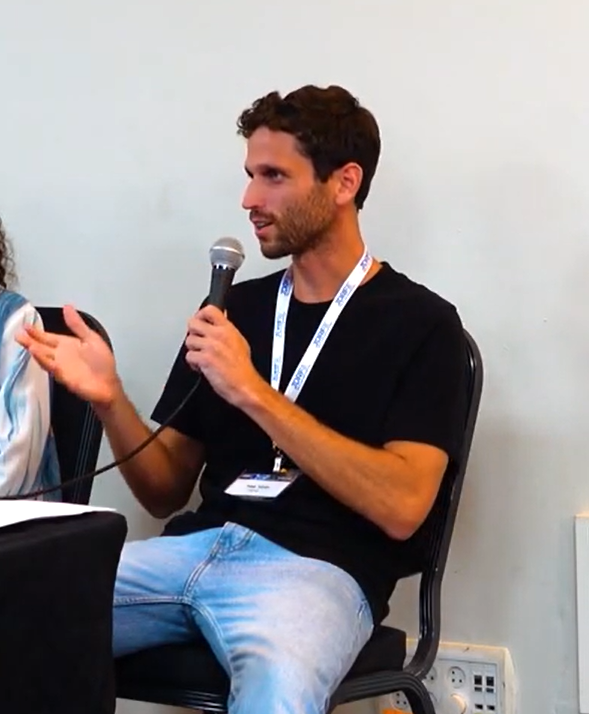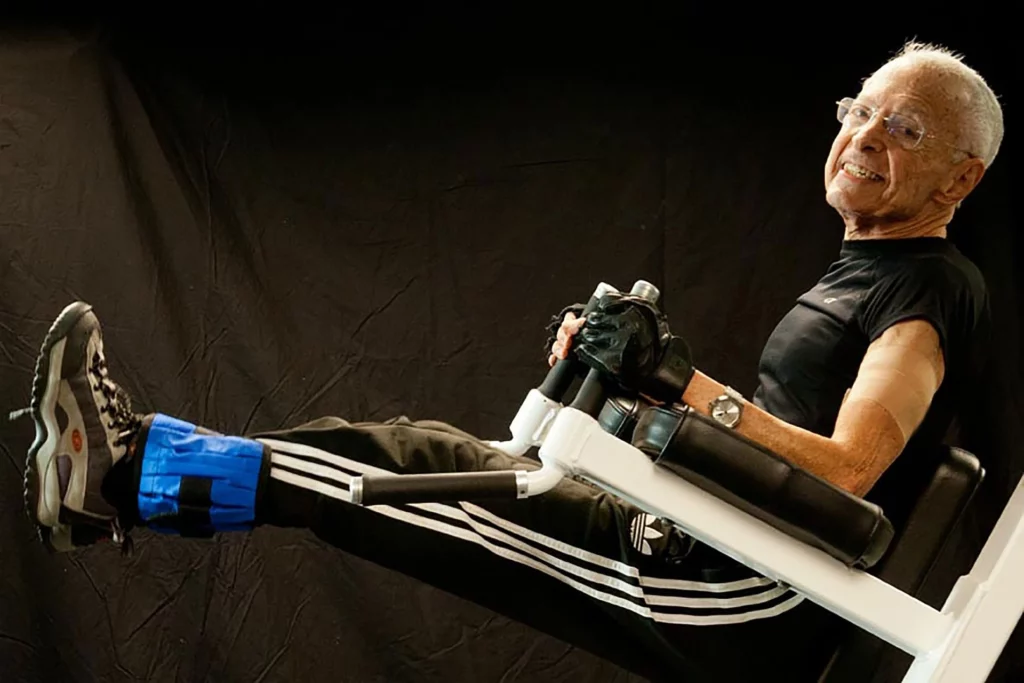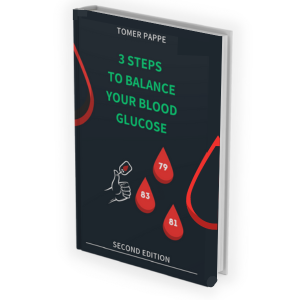
Diabetes- All you need to know
The full guide:
At the age of 11, I was diagnosed with type 1 diabetes. Years of imbalance and a constant roller coaster of blood sugar levels began to make me feel less healthy. 15 years later when I was hospitalized in the intensive care unit with life-threatening acidosis caused by not paying attention to my blood sugar levels, I promised myself that “as soon as I am released I will do everything to regain control of my blood sugar and my life.” I decided I was going to figure out what was throwing my body out of balance at any cost and it really was.
From the moment I discovered the tremendous effect the food I eat has on my blood sugar levels, on my life and on my health, I never stopped researching and developing. I was so moved by the fact that the food I eat affects every aspect of my life that I decided to turn this discovery into a profession and signed up for a degree in nutritional sciences so that I could, through the therapist’s chair, pass this knowledge on to as many people as possible. Beyond the tremendous improvements in daily sensations, balancing diabetes saves lives and therefore I believe I am obligated to share with others the tools I have acquired to control blood sugar.
This is what I do in my daily work and this is the message I convey in my programs, in the workshops I give and in my lectures – diabetes is a curable disease. Balancing blood sugar and preventing diabetes complications save the lives of diabetics around the world – literally. When we balance the sugar and avoid diabetes complications, we neutralize the disease. Type 2 diabetes can be completely cured by changing the lifestyle if no irreversible damage is done to the pancreas and type 1 diabetes can be completely managed by changing the lifestyle.
Today I am able to sleep a few hours at night, work and be focused 12 hours a day and even more without feeling drops in energy throughout the day. On days when I couldn’t control my blood sugar I could sleep 12 hours a night and still wake up tired. As a child diagnosed with ADHD, today I am the most focused, the most alert and my mood is the most stable it has ever been. Today my blood sugar is more balanced than even my friends who do not have diabetes.
As soon as I started limiting the carbohydrates I eat – the daily sugar measurements became predictable. In one moment I solved the frustrating situation where every measurement of blood sugar levels is a surprise in itself and this change in itself gave me a lot of peace of mind. Today I know that as I stay more balanced for a longer time – these feelings just keep getting better and better. Today it is important for me to convey the message that every diabetic can and is entitled to live with better sugar values than a person who does not have diabetes. All that is required of us as diabetics is to have the willingness to make a change and the motivation to take responsibility for the body.
Table of Contents:
- 1 What is Diabetes?
- 2 What is type 1 diabetes?
- 2.1 What is the cause of the outbreak of type 1 diabetes?
- 2.2 Symptoms indicating type 1 diabetes outbreak
- 2.3 Treatment of type 1 diabetes
- 2.4 Type 1 diabetes management equipment
- 2.5 Be healthy today as a type 1 diabetic, control your blood sugar and prevent diabetes complications in the future
- 2.6 Balance Diabetes
- 2.7 Physical Exercise with Diabetes
What is Diabetes?
Diabetes is a condition that affects the way the body turns food into energy.
In diabetes, the body does not produce enough insulin or is unable to use insulin completely. As soon as insulin does not doing its job, the concentration of sugar in the blood begins to rise.
In a normal state, the body breaks down most of the carbohydrates from the food into sugar (glucose) and releases it into the bloodstream, and when the blood sugar level rises, the pancreas receives signals to release the hormone insulin. Insulin serves as a kind of key that brings the sugar from the blood into the body’s cells for use as energy and with the help of this mechanism the body always strives to maintain a low concentration of blood sugar. This fine regulation is made possible thanks to the normal functioning of the insulin hormone in the body. I will detail more about insulin later.
Type 1 diabetes
The popular opinion is that type 1 diabetes (which used to be called juvenile diabetes) is caused by a wrong reaction of the immune system in which the body attacks itself, that is, an autoimmune attack. After the outbreak and the end of the honeymoon period, the pancreas of a type 1 diabetic is unable to produce insulin and that diabetic depends on externally injected insulin to balance blood sugar and sugar measurements to monitor blood sugar for the rest of his life. Today there is a phenomenon called “Lada diabetes” which is the same condition as type 1 diabetes and the only difference between Lada diabetes and type 1 diabetes is that Lada develops more slowly.
type 2 diabetes
Type 2 diabetes is a condition that develops over a long period of time and is usually caused by lifestyle. After a long time in which the efficiency of insulin absorption decreases and the efficiency of insulin production is eroded – type 2 diabetics are forced to use external insulin or pills to make up for what the body is unable to do. The condition in which the insulin production capacity of the pancreas is completely eroded is the same as type 1 diabetes/juvenile diabetes.
Type 2 diabetes can be cured by changing the lifestyle and switching to a diet low in carbohydrates and high in protein and fat. When irreversible damage is caused to the pancreas, it is no longer possible to cure type 2 diabetes only by changing the lifestyle and complementary medical treatment is necessary. Type 1 diabetes is completely manageable by reducing carbohydrates and relying almost exclusively on animal protein and fat. When sugar levels become predictable throughout the day and night, diabetics feel the healthiest, sharpest and most focused during the day while avoiding devastating diabetes complications. In the prevention of diabetic complications, diabetics succeed in neutralizing the disease, whether it is type 2 diabetes, type 1 diabetes or juvenile diabetes. Balance is above all regardless of the type of diabetes.
Gestational diabetes
Gestational diabetes is a relatively new condition in the history of the medical world. Gestational diabetes is not exactly diabetes in the full sense of the word like type 1 diabetes for example. Gestational diabetes represents a condition of strong insulin resistance during pregnancy. This is a condition that develops in pregnant women who have never suffered from diabetes and may lead to the appearance of health problems in the fetus.
In most cases, a diet low in carbohydrates and a smart and precise restriction of carbohydrates together with monitoring the blood sugar levels will solve the problem. This condition of gestational diabetes in most cases passes after birth, but according to statistics there is a 50% chance of developing type 2 diabetes in the mother later in life after pregnancy. This fact alone reinforces the need to switch to a low-carbohydrate diet as early as possible to avoid the development of gestational diabetes in advance. This diet can prevent health problems from both mother and fetus.
Prediabetes
A borderline condition in which the blood sugar rises above normal levels (70-100 mg/dL) chronically. In pre-diabetes, blood sugar levels are higher than normal, but not high enough to diagnose type 2 diabetes. Naturally, pre-diabetes increases the risk of developing type 2 diabetes as well as the risk of diabetes complications, just as unbalanced diabetes increases the risk of diabetes complications. The good news is that if you have been diagnosed with pre-diabetes, a real lifestyle change will help you reverse the condition without medical intervention.
In the Western world and in Israel, almost everyone suffers from some level of pre-diabetes, even if it is relatively negligible. We live in a world where almost everyone eats too many carbohydrates, which eventually leads to the erosion of the ability to produce and absorb the hormone insulin. When the pancreas increases insulin secretion beyond its natural capabilities and insulin resistance increases in the cells, the pancreas wears out. It is difficult for the pancreas to cope with the amount of carbohydrates it has to deal with.
The official estimates are that in the United States more than 1 in 3 Americans – suffer from pre-diabetes. These data are based on the CDC’s official definitions according to which pre-diabetes is diagnosed when the A1C in the blood tests rises to a range between 5.7 and 6.4 (the A1C test indicates an average of the blood sugar levels over the past three months). There are debates to this day about the definition of pre-diabetes and if you ask the strict like Dr. Bernstein, even those who are diagnosed with any A1C value higher than 5 are considered pre-diabetic. According to these standards, almost the entire population should be diagnosed with pre-diabetes.
Insulin
Insulin is a necessary hormone for the life of every person and every living mammal on earth, but a situation of constant excess insulin in the blood must be avoided which may eventually lead to insulin resistance. The role of the insulin hormone is to bring sugar from the blood into the cells and is necessary for the fine regulation process of blood sugar levels.
When insulin resistance lasts for a long time, most of the common health problems of the current era appear such as: obesity, Alzheimer’s, thyroid diseases, muscle diseases, pain diseases, sexual dysfunction, circumcision, eye diseases, type 2 diabetes.
These are just some of the symptoms that may appear when insulin resistance lasts too long and it can be said that almost every system in the body is damaged as a result of insulin resistance and glycemic imbalance. This condition is also called insulin resistance and as mentioned it stands together with most of the modern metabolic diseases.
For my article on insulin, feelings of hunger and the metabolic syndrome.
Statistics of Diabetes
In Israel there are about 600 thousand diabetics, of which about 50 thousand are type 1 diabetics/juvenile diabetes.
Until recently, it was common to say that type 1 diabetes erupts up to the age of 35 at most, which is also why it was called juvenile diabetes, but in recent years we see that the age of onset is increasing as well as the incidence of the disease, which is generally increasing in all western countries.
More than 37 million adults in the US suffer from diabetes and it is the seventh leading cause of death in the United States. Diabetes is the number 1 cause of kidney failure, lower limb amputations and blindness in adults. It is important to note that if indirect diabetes complications were also calculated, it is possible that diabetes would have reached second place and even first place as the main cause of death in the Western world.
In the last 20 years, the number of adults diagnosed with diabetes has doubled.

Type 1 Diabetes conference in Israel
Diagnosing diabetes
The visible symptoms when the blood sugar levels go far beyond the range are – abdominal pain, shortness of breath, nausea and vomiting, increased thirst, frequent urination, drop in blood pressure, profuse sweating and the smell of acetone from the mouth. In this situation, you should quickly go to the emergency room.
Diabetes is diagnosed through a blood test and according to the official guidelines in Israel, diabetes is diagnosed when in a fasting blood test the sugar level rises above 126 mg/dL or when the sugar values during the sugar loading test rise above 200 mg/d or when the A1C level rises above 6.5.
What is type 1 diabetes?
Type 1 diabetes is a condition in which the blood sugar level rises and continues to rise because the pancreas is no longer able to produce insulin. Type 1 diabetes develops after the body attacks the cells in the pancreas that are responsible for producing insulin for some reason, which leads to the destruction of the cells and damage to the ability of the pancreas to produce insulin. The beta cells in the islets of Langerhans are the cells responsible for insulin production in the pancreas. As mentioned, insulin is a hormone necessary for life. When the body no longer produces insulin, it is necessary to receive it externally with the help of injections or with the help of an insulin pump.
There is a period when the pancreas still produces a little insulin near the attack and this period is called the “honeymoon”. The honeymoon period may last a few weeks or even a few months and sometimes the honeymoon can last years. When you react near the onset of the disease with a diet low in carbohydrates, while the cells are still able to produce some amount of insulin – the honeymoon and the ability to produce insulin can last for years and possibly even for life if you continue to follow a suitable diet.
In type 1 diabetes, the body still breaks down the carbohydrates from the food consumed and turns the carbohydrate into glucose, but as soon as the glucose enters the bloodstream, there is no insulin to get the glucose into the cells and the glucose begins to accumulate in the bloodstream, which leads to excessively high levels of blood sugar.
What is the cause of the outbreak of type 1 diabetes?
We still do not know for sure what the cause is that leads to the outbreak of type 1 diabetes and to this day there are debates among the scientists investigating the cause of the outbreak. There is the theory that links milk consumption in childhood to the onset of type 1 diabetes, there is the theory that links mental trauma to the onset of type 1 diabetes, there are many studies linking low vitamin D to the onset of the disease and it is possible that the reason is somewhere in the middle between all these theories. I personally stay away from theories like the milk theory or the trauma theory which in my eyes are a bit limited and do not broadly reflect the full picture.
I believe that autoimmune diseases and especially type 1 diabetes started as soon as we started moving away from natural life our Low vitamin D is a product of an unnatural lifestyle. If we try to analyze the reason even more deeply, it is possible that the original reason goes even further back to the beginning of life. There may be a connection to synthetic feeding during the fetal period.
It may be that an unnatural action such as synthetic nutrition that replaces a masterpiece of nature such as breast milk- leads to deficiencies that accompany the fetus afterwards in the first years when it must build a strong microbiome and a stable immune system, and then later in development in the stages that are supposed to form the basis of its physical strength as a person and for resistance to diseases and to physiological dysfunctions later in life. In any case, more quality scientific research is required in order to confirm this theory and I would love to see such studies in the coming years so that the root cause of the outbreak can be mapped.
Symptoms indicating type 1 diabetes outbreak
During the onset of type 1 diabetes, the body tries to get rid of excess glucose through the kidneys which can lead to urine that is characterized by a pungent smell. Other prominent signs are mainly an increased feeling of thirst, frequent trips to the bathroom, a feeling of exhaustion and fatigue throughout the day and weight loss for no reason. In more advanced stages, the smell of acetone will also appear from the mouth, which already indicates a dangerous condition of diabetic acidosis.
The symptoms tend to appear quickly – over a few days or a few weeks.
Treatment of type 1 diabetes
Managing type 1 diabetes can be challenging, there is no debate about that, but there are ways to cope and even resolve the struggle and the disease. This disease is a blessing and a curse at the same time. It forces us to be attentive to our body and to know all the time what is really happening behind the scenes in our body and this is the blessing. The curse is that the rest of us are too aware that we sometimes lose the lightness of everyday life. In my eyes, the advantages outweigh the disadvantages and as diabetics we are 100 percent masters of our health destiny, if only we make the decision to always put the body first. Once you understand the power that our dietary choices have on blood sugar balance, you realize that diabetes can be completely controlled.
From physical activity to understanding the power of limiting carbohydrates and eating the right diet for us as diabetics in particular and in general as living beings on this planet, implementing necessary lifestyle changes will affect our feelings at any given moment and our future by having the ability to avoid diabetes complications and live a full and fruitful life with Life expectancy is the same as a person who does not have diabetes.
Today there is talk of many and varied directions for a cure for diabetes, from pancreatic cell transplantation to an external or internal artificial pancreas. Despite all this talk about technology, as of this moment there is no cure for type 1 diabetes. What does exist today (since the middle of the last century) is a solution to diabetes – a diet low in carbohydrates. A diet low in carbohydrates together with spot adjustments in insulin doses or medications will solve the pursuit of blood sugar and, as mentioned, prevent us from diabetes complications.
This is if you really make sure to be in the range of blood sugar levels between 70-100 mg/dL 24/7. It is true that with type 1 diabetes we will not rid ourselves of the need to use insulin externally, i.e. injections, but only in minimal physiological amounts. The minimum physiological amounts are the exact amounts of insulin that are required for optimal daily functioning and they vary from one person to another. The injected insulin is insulin for everything in terms of its biological properties, type 1 diabetics receive it externally instead of from the pancreas.
Type 1 diabetes management equipment
Everyone with type 1 diabetes needs to take insulin. Some people will choose injections and others will prefer to use a pump connected to the body in an infusion that drips constant insulin into the tissue to which it is connected. A complementary tool highly recommended for every diabetic and almost every person is a continuous glucose meter that monitors blood sugar levels throughout the day.
Today, some of the pumps connect directly to the continuous sugar meter and some also communicate with it and balance the sugar actively, which is also called a “loop”. The pump has other problems that in the long run may damage the tissues to which they are permanently connected, which over the years may lead to a decrease in the efficiency of insulin absorption due to the local damage to the tissues to which the user tends to connect the pump.
I use a continuous glucose meter which I use for observation only and it is not a therapeutic tool. Despite the sensor, I measure my blood sugar dozens of times a day sometimes in order to confirm my feelings and it even helps me to stay in the range between 70-100 mg/dL.
Living with type 1 diabetes – in my groups there are people living with type 1 diabetes when they share their experiences in the treatment and management of their condition. From learning how to come to terms with a diagnosis to finding different ways to cope, the collection of personal stories will strengthen you or a family member dealing with diabetes.
Be healthy today as a type 1 diabetic, control your blood sugar and prevent diabetes complications in the future
Dr. Richard K. Bernstein is an example of one of the pioneers of the solution to diabetes. Today, at the age of 88, after over 75 years with type 1 diabetes and about 55 years with a low-carbohydrate diet, he still works and treats his patients in his clinic located near New York. All this after his doctors informed him at the age of 30 or so that he probably would not survive more than a few years due to the severe diabetes complications he was suffering from. In the days when there wasn’t even a standard home blood glucose meter yet, he began to understand all by himself the power that diet and carbohydrate restriction had on his blood sugar control.
He is an example that diabetics have the right to live with normal and even more balanced sugar values than people who do not have diabetes. For me and for many diabetics he was the real breakthrough in finding a real solution to this disease. Like Dr. Bernstein, I also embarked on the same research after being hospitalized in the intensive care unit with acidosis that almost took my life. From those days and nights in the hospital I was released with the understanding that I had to regain control of my blood sugar and that’s exactly what I did.
I have read countless books written by diabetics and world experts who have gone through similar paths and Dr. Bernstein’s bookwas among them. Since then I have not stopped researching and refining the ways to balance blood sugar, for me and for the people I accompany along the same path. In our meetings and throughout the process with me, I shorten the way for them to balance their sugar and control the disease and prevent them from making unnecessary mistakes, some of which I almost paid the most expensive price for. Today, both I and the diabetics I accompany are more balanced than people who do not have diabetes. I pass on from my experience and this is the real mission in my eyes.

Celebrating his 90th birthday and still
working and treating his patients.
Type 1 diabetic over 75 years.
Balance Diabetes
The transition to the way of eating based on carbohydrate restriction changed the lives of many diabetics and saved them from fatal diabetes complications. The foundation stones for this approach were laid by giants such as Dr. Joselin and Dr. Bernstein. Concentration that improves throughout the day, energies, a good mood that is not subject to jumps and falls, physical strength and improvement of physical abilities – all these are worth any difficulty that arises during the period of transition and adaptation to the new way of eating.
Over time, like any change in the way of life, I began to realize how many things I thought I depended on are not at all necessary for me on a daily basis. Substances such as caffeine, cocoa and other indulgences that most people in the modern world use as a “reward” for effort in the style: “I’ll just finish this chore and then I can rest and drink coffee in peace on the balcony.” This method of reward has led us to a culture where we hang our happiness, our creations and all our desires on food. In my eyes, this attitude causes disruption of the order of priorities in life.
Instead of deriving satisfaction from improvement in spiritual areas or in the areas of interest that truly fulfill us, we have accustomed ourselves to live for satisfaction from external stimuli. Those stimuli satisfy us only for the second we consume them but in the long run they are usually destructive. I managed to detach myself from all of these, which pretty much eliminated diabetes as a disease for me, and since then I’ve been on “automatic pilot”. This is a process that required time and perseverance and it is not a change that happened in one day.
When I am asked about the change I made, I usually suggest to the questioners to give them a chance of one month and after a month to decide whether to continue or not. I also started from one month and haven’t stopped since.
Physical Exercise with Diabetes
After the learning period the benefits you will experience from adding regular training to your daily routine will outweigh the disadvantages. One major advantage is the prevention of future diabetes complications, beyond the immediate benefits such as improving physical sensation and mood.
The main disadvantage of physical activity for insulin-dependent diabetics is the difficulty in controlling blood sugar levels, during and after physical exertion. If you apply the principles detailed in this article, there is no reason why you won’t be able to exercise and maintain a balanced blood sugar, provided you don’t make too fast and extreme changes, that is, you implement each change gradually. Gradualness is the key word that accompanies every insulin-dependent diabetic throughout his life. You will find that over time, exercising with diabetes becomes easier and more predictable and that there is no obstacle to exercising at a high intensity with diabetes and a low-carb diet.
The myth that “you can’t build muscle mass without carbohydrates” is not true and has been disproved quite a few times by famous athletes and bodybuilders like Dr. Sean Baker. The secret is to consume sufficient amounts of animal food, with an emphasis on sufficient amounts of protein and to never be too hungry or force ourselves to fast. Sometimes as a start it is necessary to eat larger amounts than the amounts you are used to, but over time this too should balance out. Spot coverage of certain workouts with carbohydrates and spot coverage of certain workouts with insulin are necessary to maintain a straight line of blood sugar before, during and after exercise.
I believe that for diabetics who limit the amount of carbohydrates and base their meals on quality animal food, the sky is the limit and therefore there should be no obstacle to participating in almost all types of competitive sports that exist, provided that balancing diabetes is a priority. After adapting to this way of eating and as long as you eat good amounts of protein and fat and you don’t starve your body, you will see that your physical fitness will be better than the days when you ate carbohydrates and that the recovery time from training to training is getting shorter even when it comes to training trees.
For the full article on how to maintain physical fitness with diabetes click here.




